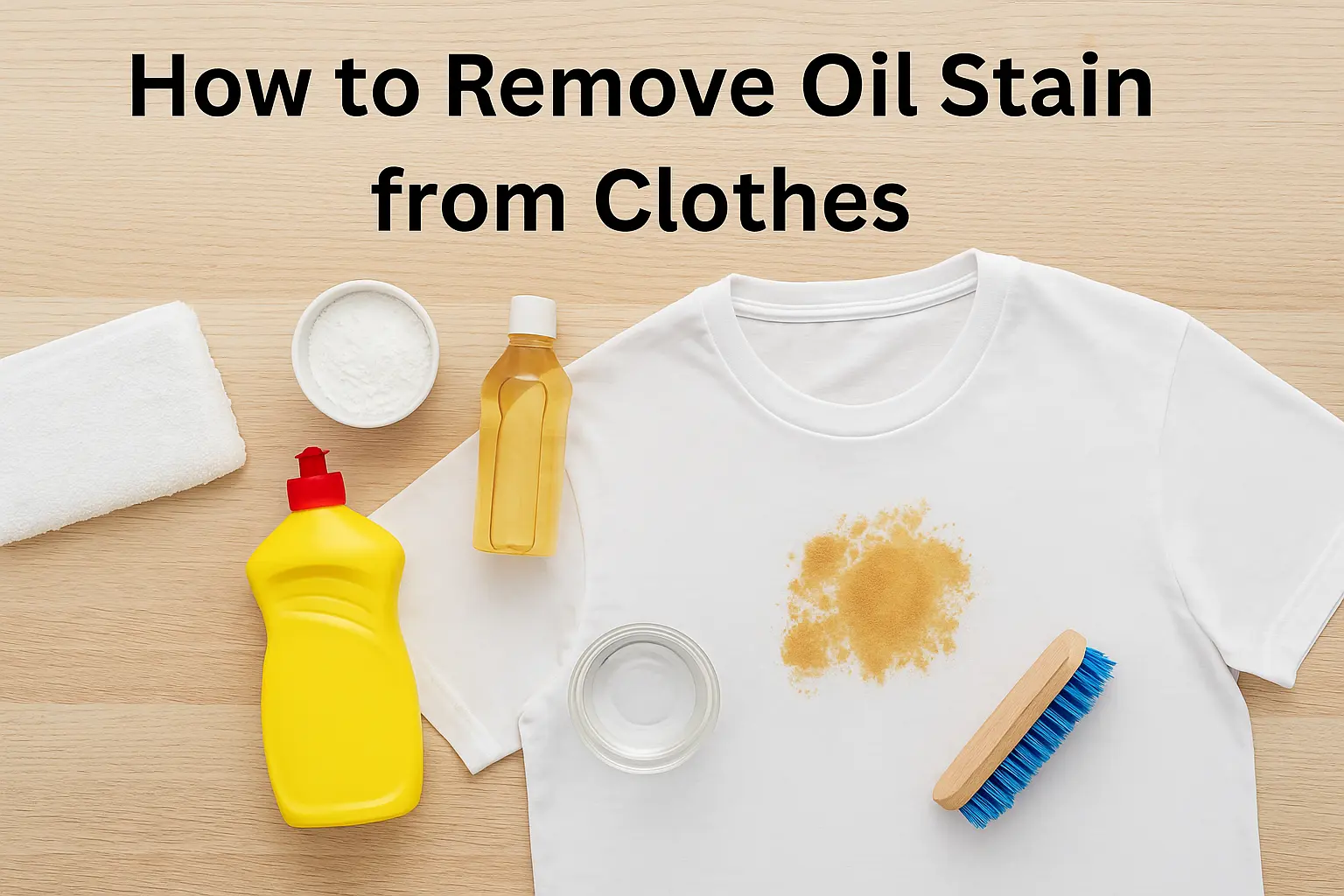Now Reading: Easy tricks: How to remove oil stain from clothes
-
01
Easy tricks: How to remove oil stain from clothes
Easy tricks: How to remove oil stain from clothes

Did you get cooking oil on your shirt during a barbeque over the weekend? Or maybe your work clothes got some salad dressing on them at lunch? It is the hardest things for Australians how to remove oil stain from clothes, but with the appropriate methods and a little time, you can get your clothes back to being completely clean.
This article will discuss effective methods for removing oil stains from clothing. These include natural cures, common items you can find at the grocery store and advice for delicate materials. Let’s begin.
Why oil stains are tough to remove
Oil stains are hydrophobic; they don’t like water and stick securely to cloth fibres. Washing them with water on a regular basis often won’t help because oil doesn’t dissolve easily. That’s why it’s important to act quickly and use the correct cleaning products to get rid of these marks.
What to do right away when oil spills happen
As soon as you see an oil stain, you should clean it up. The more you wait, the more it gets into the cloth.
How to remove oil stain from clothes:
1. Don’t rub; just blot
Gently blot the stain with a clean cloth or paper towel. Don’t rub it because that will simply push the oil deeper into the fibres.
2. Put on an absorbent
Put a lot of baking soda, cornflour, or baby powder right on the stain. Household items like baking soda, cornflour or baby powder will absorb much of the oil still present on the fabric. Please allow it to sit for at least 15–30 minutes.
3. Brush off the powder
After waiting, use a clean toothbrush or soft cloth to brush away the absorbent. You should now be able to lift most of the oil.
Dishwashing liquid method: A simple Aussie solution
One of the best ways is to use dishwashing liquid, especially if it’s made to cut through oil, like Morning Fresh or Palmolive.
Here’s how:
- Put a tiny amount of dish soap immediately on the discoloration.
- Using your fingers or a toothbrush, gently rub the liquid into the fabric.
- Wait 5 to 10 minutes.
- Use warm water to rinse.
If the stain persists, please repeat the process or consider trying the next procedure outlined below.
Mixing white vinegar with baking soda
You may improve your soap work on harder stains by adding white vinegar.
Method:
- Pour a little white vinegar on the stain after you put dishwashing liquid on it.
- Let it sizzle, then pull the oil out of the fibres.
- Use a gentle brush to scrub gently.
- Rinse the garment thoroughly and prepare it for washing.
This procedure works effectively on both cotton and synthetic materials.
Machine washing tips for oil-stained clothing
After the pre-treatment is done, it’s time to put the clothes in the washing machine:
- Please refer to the care label first to determine what the cloth can handle.
- Put in your usual laundry soap.
- If the cloth can handle it, add a scoop of oxygen bleach (like Napisan) for added cleaning power.
- Don’t put the clothes in the dryer until you’re sure the stain is gone. Heat will set the oil for good.
How to deal with dried or set-in oil stains
Don’t give up if the stain is still there after washing it.
Use this procedure to get rid of old oil stains:
- Use WD-40 cautiously and spray a little bit on the stain.
- Allow it approximately ten minutes to sit.
- Apply baking soda to the affected area.
- Use a toothbrush to scrub the stain and make it easier to get rid of.
- As normal, rinse and wash the item.
Note: Before using WD-40 all over, always test it on a small area first.
What about fragile fabrics, like silk or wool?
If you want to make something out of silk, wool, or cashmere, it’s preferable not to do it yourself. These materials need additional care, and severe treatments can hurt them for good.
- To soak up the oil on the surface, gently dab the discoloration with baking soda or baby powder.
- As soon as you can, take the clothing to a dry cleaner.
Don’t use vinegar or WD-40 on delicate clothes, since they can change the colour or shape of natural fibres.
Natural alternatives for eco-conscious Aussies
If you want to live in a way that is better for the environment or has less toxins, consider these:
- Apply eucalyptus oil carefully and rinse well.
- Lemon juice and sunlight are most effective when used on white clothes.
- Mix baking soda with a few drops of water to make a paste and rub it in gently.
After using natural treatments, be sure to always rinse and wash to get rid of any residue.
Tips to prevent future oil stains
A little planning will help you avoid another laundry disaster:
- When you cook or barbeque, put on an apron.
- When you eat greasy foods, put a napkin or serviette on your lap.
- For emergencies, include a small stain remover pen or pack of wipes in your purse or car.
- If you think an oil splash might have gotten on your clothing, treat it before washing it.
Conclusion
Your favourite garments don’t have to be ruined by oil stains. You can get rid of even the worst grease marks with everyday Aussie home items like baking soda, vinegar and dishwashing solutions. The most important thing is to act quickly, use the appropriate products and not use heat to set the stain until it’s totally gone.


























